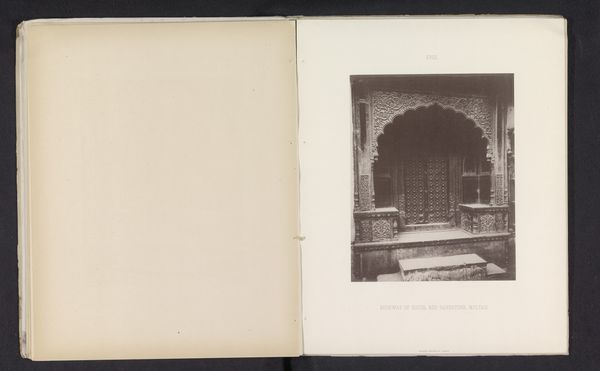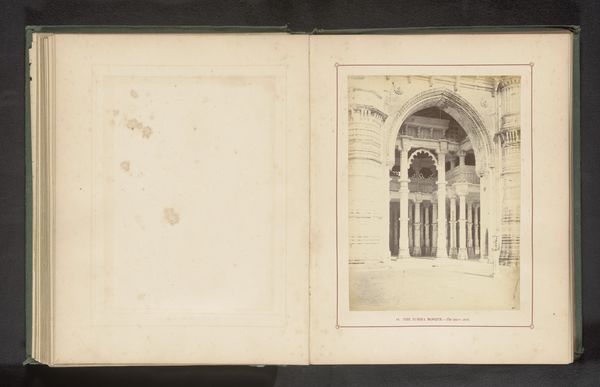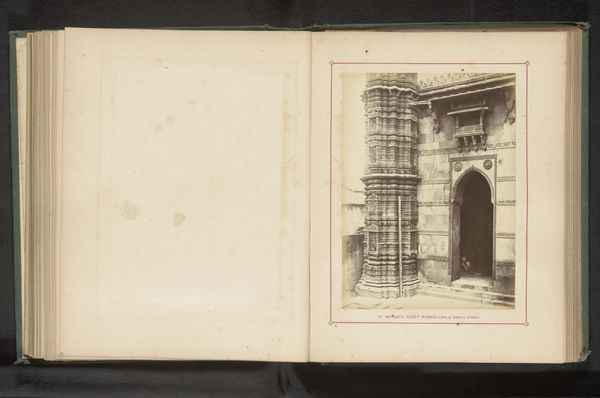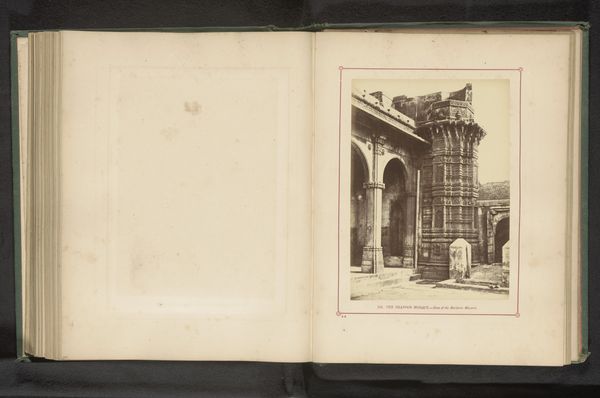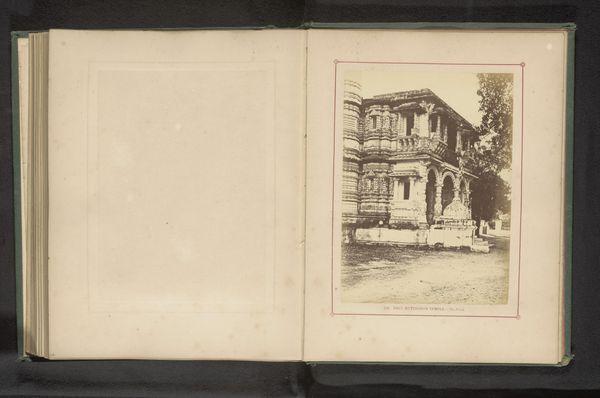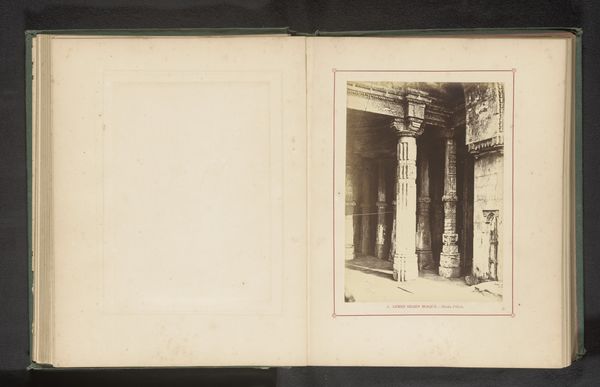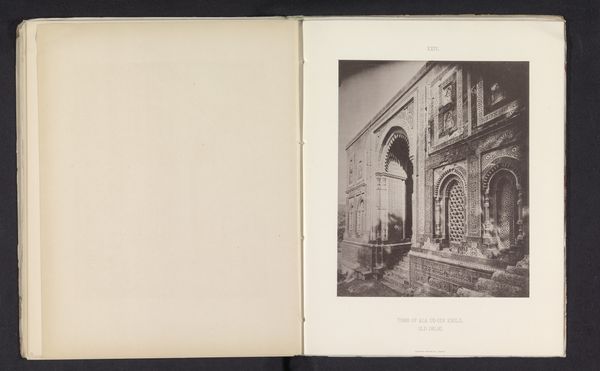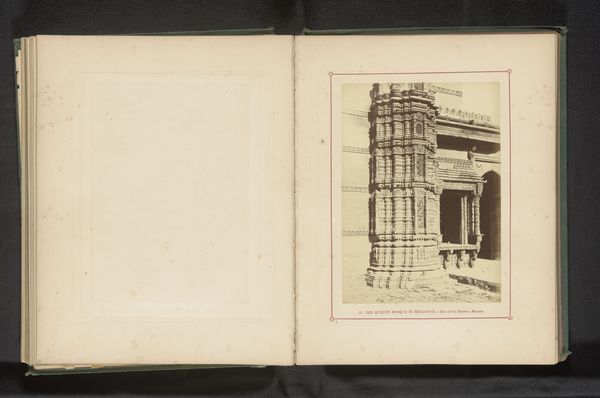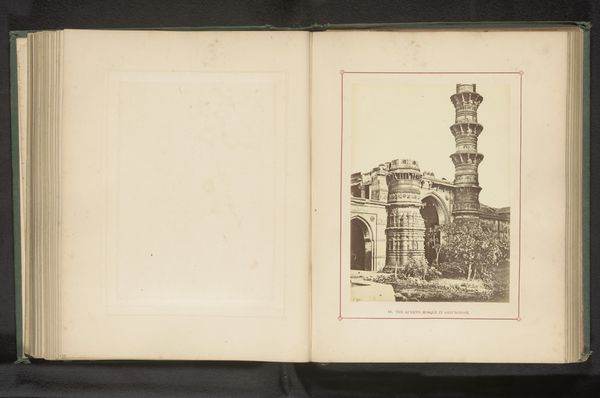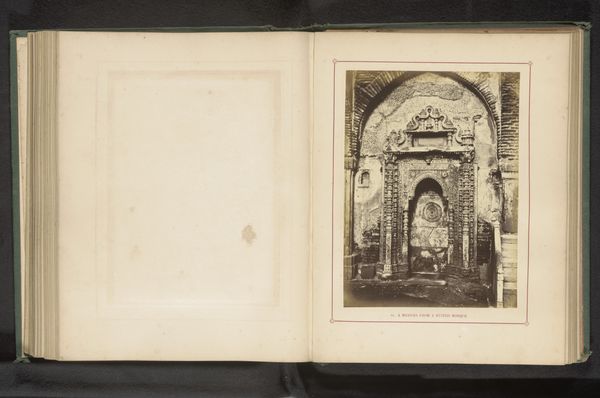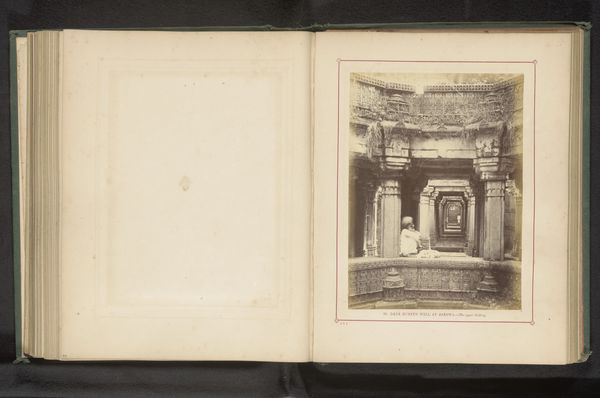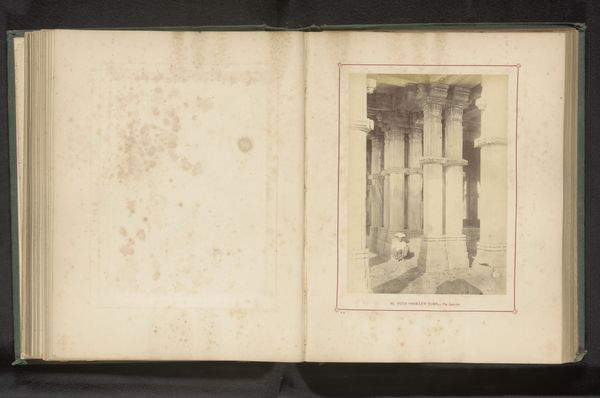
print, photography, albumen-print, architecture
# print
#
landscape
#
photography
#
islamic-art
#
albumen-print
#
architecture
Dimensions: height 188 mm, width 135 mm
Copyright: Rijks Museum: Open Domain
This photograph of the façade of the Rani Rupamati Mosque in Ahmedabad was taken by Thomas Biggs in the late 19th century. It's part of a larger project documenting the architectural heritage of the Gujarat region in Western India. Biggs was working at a time when the British colonial administration was investing in the study and preservation of Indian monuments. His photographs, while seemingly objective, served a specific colonial agenda: to catalogue and understand the architectural styles and building techniques of the region. The images documented a vision of an orderly, classifiable India, ready for governance. The mosque itself, with its blend of Islamic and Hindu design elements, tells a complex story of cultural interaction and adaptation, but in this image such blending is frozen, made silent. To fully understand this photograph and its context, we would need to delve into the archives of the British Raj, examine travelogues, and study the history of architectural surveys in colonial India. Only then can we understand the social and institutional forces that shaped this image, and the ways in which it, in turn, shaped perceptions of Indian history and culture.
Comments
No comments
Be the first to comment and join the conversation on the ultimate creative platform.
